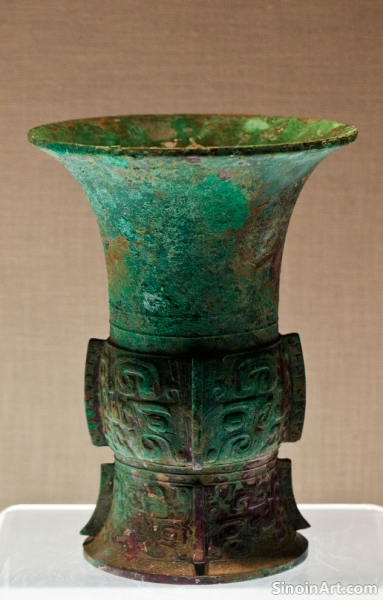The Legacy of Chinese Bronze Ware: Its Influence on Later Art Forms
|
The enduring legacy of Chinese bronze ware extends far beyond its own time, influencing later forms of Chinese art, including ceramics, painting, and sculpture. The forms, designs, and aesthetic principles established during the bronze age continued to inspire artists for centuries. The influence of the bronze era is still felt in modern Chinese art.  The forms and shapes of early bronze vessels, such as the ding, gui, and zun, were often replicated in ceramics and other materials, showcasing the lasting influence of the bronze style. The style of the bronze vessels became highly influential throughout the history of Chinese art. These forms served as a foundation for later artistic forms.  The motifs and patterns used on bronze ware, such as the taotie, dragons, and phoenixes, also continued to appear in later art forms, often with slight variations and interpretations. The symbols and motifs have continued to be influential in Chinese art for centuries. The power of the ancient symbols continues to be a creative force.  The emphasis on balance, symmetry, and intricate detail, which are hallmarks of Tang bronze ware, also influenced the development of Chinese calligraphy and painting. The underlying design principles of bronze work influenced later artistic endeavors. The use of design principles helped to shape later styles of art. The legacy of Chinese bronze ware is a testament to its enduring beauty and its profound impact on the development of Chinese artistic traditions. The beauty and complexity of the works of the bronze era have continued to inspire artists for centuries. The legacy of this artistic movement is still relevant today. |
Tag : bronze ware influence, Chinese art legacy, taotie in later art, ceramic forms, ancient designs
Related information
- The Use of Bronze in Ancient Chinese Maritime Activities: Vessels and Tools
- The Symbolic Significance of Bronze in Ancient Chinese Power Structures: Ritual, Authority, and Legitimacy
- The Use of Bronze in Ancient Chinese Warfare Technology: Beyond Weapons
- The Archaeological Significance of Chinese Bronze Ware: Discoveries and Insights
- Bronze Ware and Ancient Chinese Understanding of Astronomy: Maps of the Sky and the Measurement of Time
This article explores the use of bronze in ancient Chinese maritime activities, highlighting its role in ship construction, the creation of navigational and fishing tools, and its contribution to the development of trade and exploration.
This article explores the symbolic significance of bronze in ancient Chinese power structures, highlighting its role in ritual practices, its symbolism of authority and legitimacy, and its use by rulers to consolidate political control.
This article explores the use of bronze in ancient Chinese warfare technology beyond weapons, highlighting its role in creating chariot fittings, siege engine components, and protective armor, showcasing the technological sophistication of the era.
This article explores the archaeological significance of Chinese bronze ware, highlighting the discoveries at various sites, the insights gained into ancient society, metallurgy, trade, and the overall contribution to our understanding of early China.
This article explores the connection between bronze ware and ancient Chinese understandings of astronomy, highlighting the use of celestial motifs, the depiction of astronomical phenomena, and the creation of instruments that aided in understanding the universe.